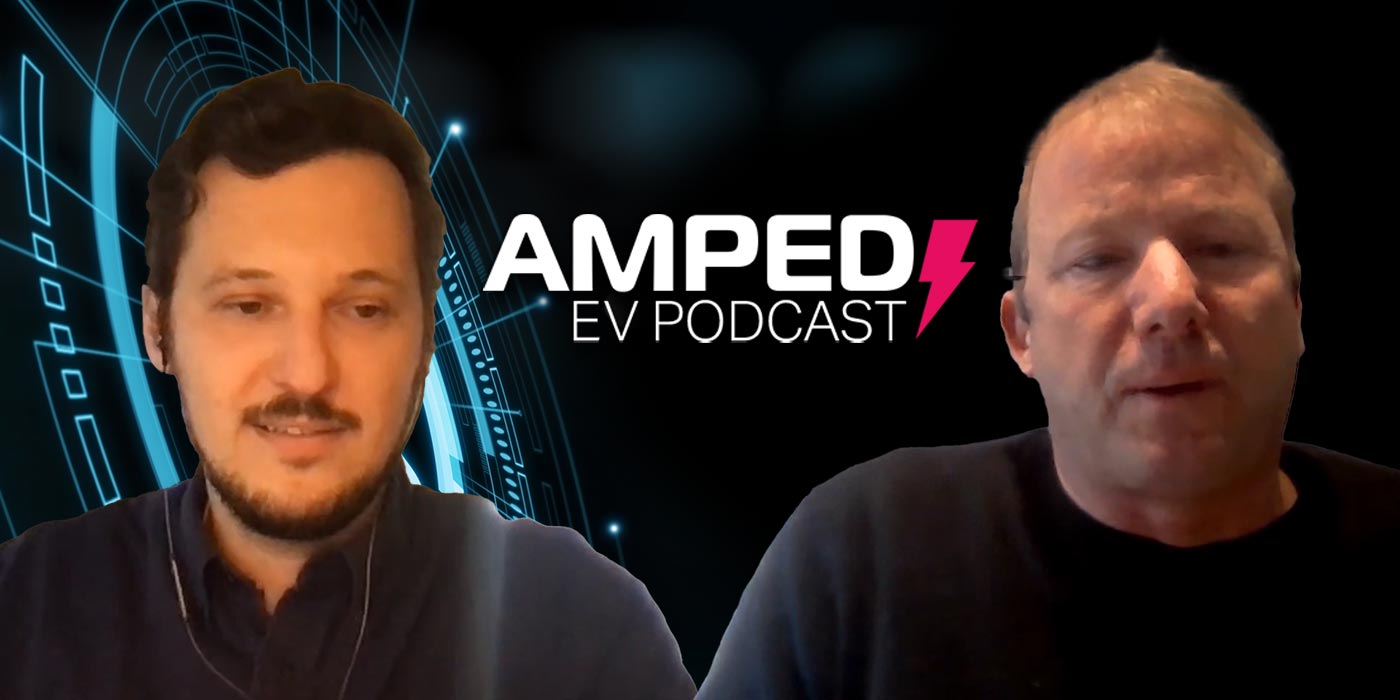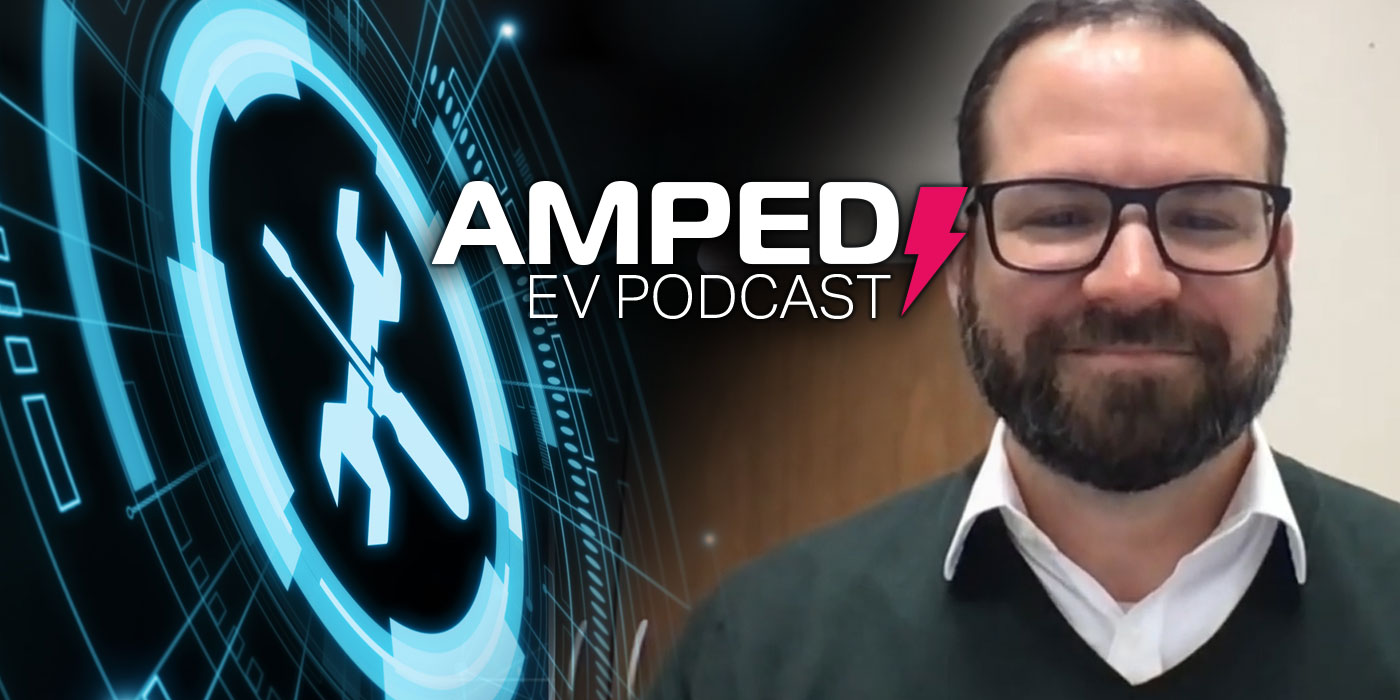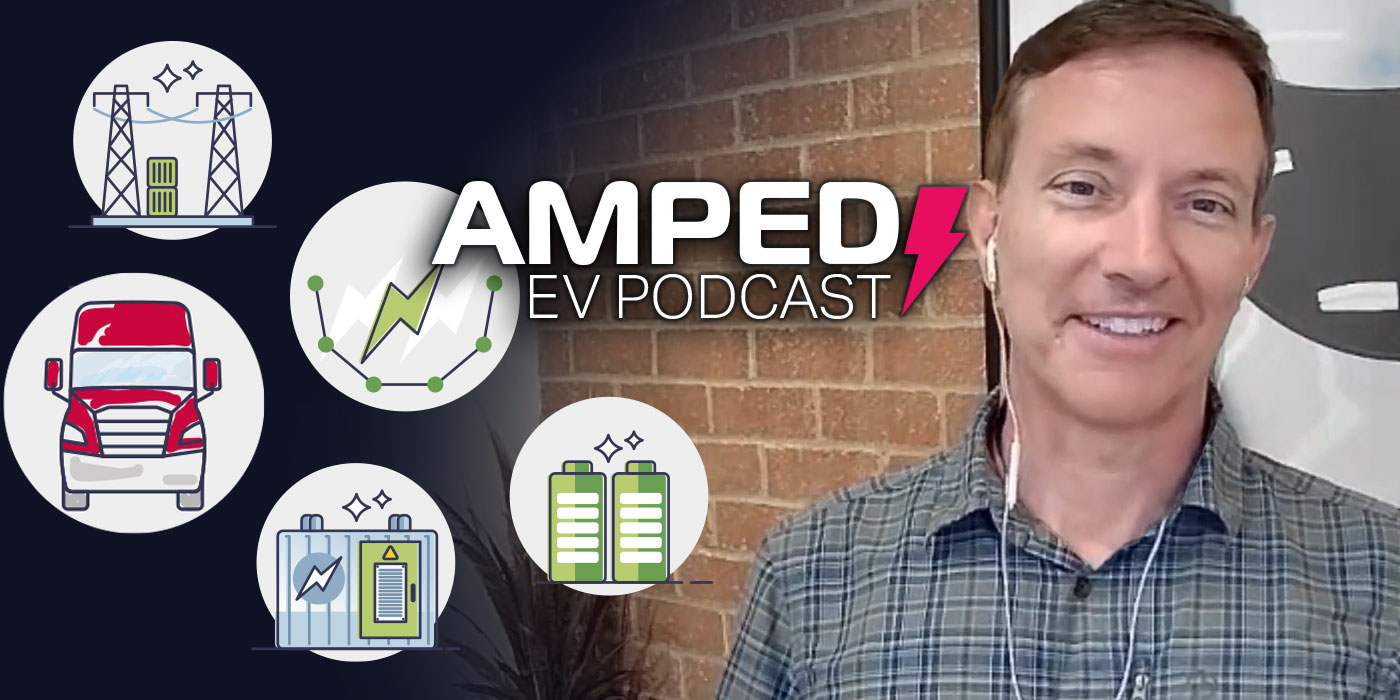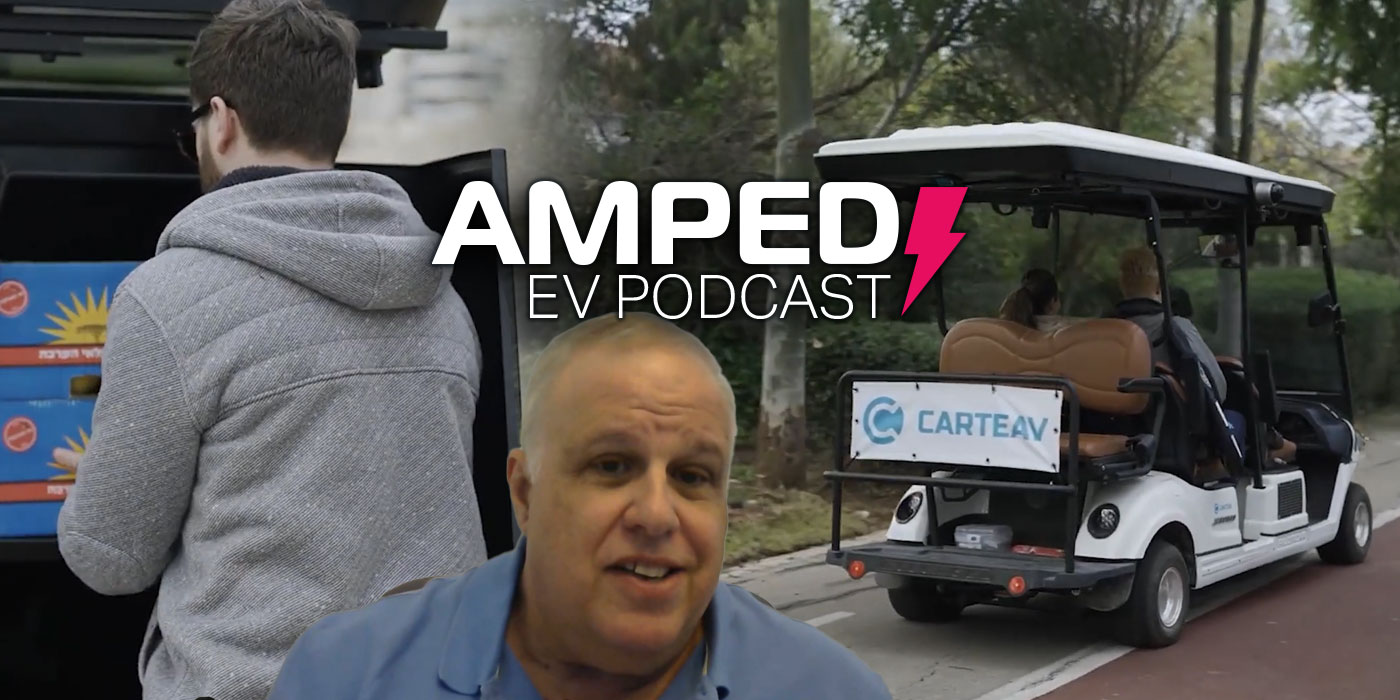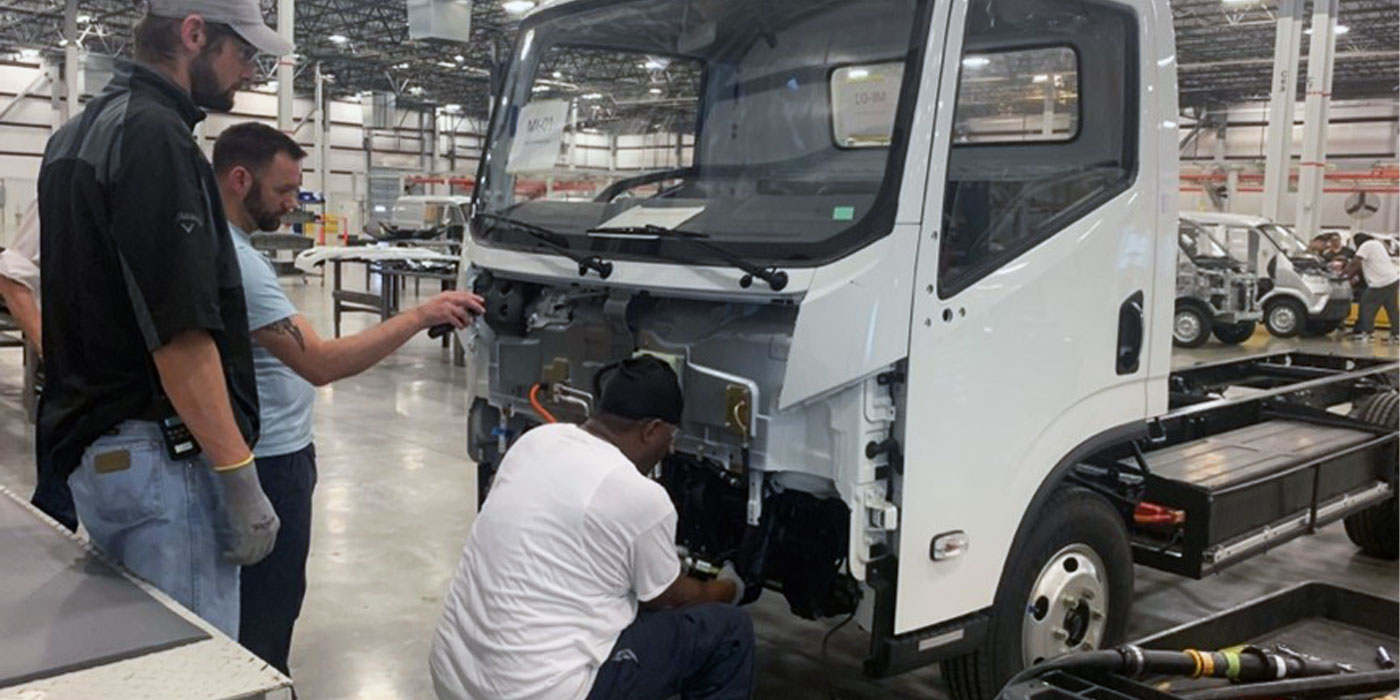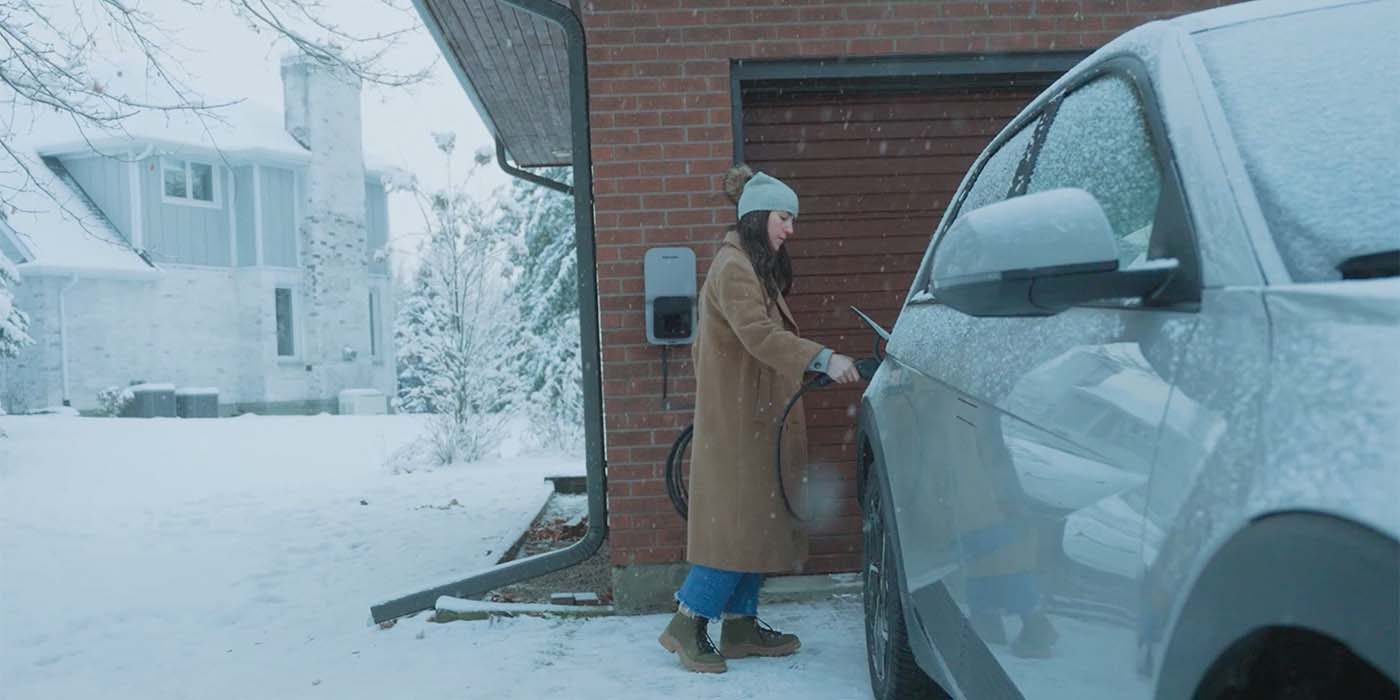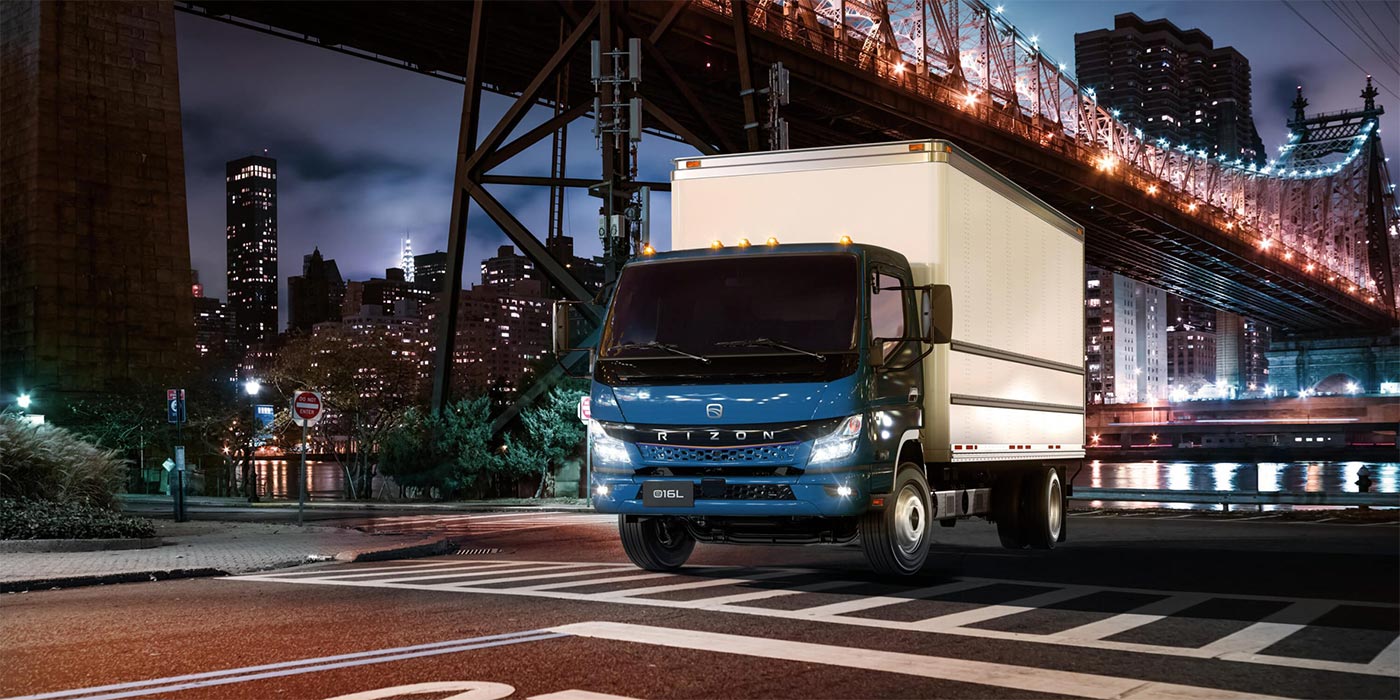EV charging is easier said than done, and it’s one of the biggest hurdles to successful full-scale EV adoption. Now, imagine you own a fleet of electrified vehicles. If you don’t have the right infrastructure in place, your what-seemed-to-be solid EV investment is now one built on sand.
On the surface, it can seem like that EV infrastructure rests solely on your shoulders – but it doesn’t have to.
“Charging-as-a-service” is more than just industry buzzwords. It offers the opportunity for businesses with fleets of EVs to stay focused on their core business instead of being a “charging manager.” Though, this opens a new challenge – there are a lot of new names in the charging-as-a-service space. Voltera is one of those new names, and there’s no better way to kick the tires on a new service than to have a conversation. That’s why we connected with Matt Horton of CEO, Voltera. Voltera sites, builds, owns, and operates strategically located, fit-for-purpose charging facilities to enable EV deployment and operation at scale. But how do they work with fleets to meet specific application needs, and what advice do they have in the Wild West that is charging infrastructure equipment?
Want more Amped EV podcast? Click here.
Here’s a transcript of the show:
David Sickels: Hello and welcome back to the Amped EV Podcast. My name is David Sickels, I am the editor for The Buzz.
Jason Morgan: And I am Jason Morgan, Content Director for Fleet Equipment. Hi David. You know what we need to talk about? Charging. I know we’ve talked about it a lot, but two things for you. First of all, what I really want to get into is charging as a service.
David Sickels: Sure, I’ve been hearing that a lot. Big buzzword. Buzzwords.
Jason Morgan: Yeah, that’s right. As a service, everything’s a service now, I’ve got lots of services, but this is charging as a service. The other thing that I think is interesting is I think we’re moving toward the second era of charging, if you will. Think about it, electric, at least on the fleet side and the commercial side, electric trucks have been out in the market for two and a half years in pilot form, maybe three years in some cases.
Jason Morgan: Thinking back on it now, orders opened two years ago from several OEMs, actually last month, it would’ve been last month, would’ve been the two-year mark. So there are people that are out there and they’ve done it. There’s infrastructure, they’re running trucks.
David Sickels: Yeah. People are learning things, people are learning the challenges. So yeah. And people are finding out that it’s not as easy as it sounds oftentimes.
Jason Morgan: That’s right. And how do I take the next step? So I am amped to bring you a conversation with Matt Horton, CEO of Voltera. He’s going to take us through what Voltera is, it’s a new name for us, and dive into some of this charging as a service info.
David Sickels: I’m amped, let’s get to it.
Jason Morgan: Matt, so good to talk to you. Thanks for taking the time, we’re excited. So Voltera is a new name to us. Can you give us a little background on the company, what your mission is, how you fit in this whole, maybe, charging as a service kind of buzzword that’s going around right now?
Matt Horton: Yeah. Well, glad to be here and don’t feel bad, Voltera is a new name for just about everybody. We did our public launch a little over a month ago, and now we’re out there telling the story, helping the world understand what we are. To best describe what we do, I’ll give you a little bit of the background of the company. We’ve really brought three parties together to focus on charging infrastructure. We’ve brought a group of people who have deep experience in the space, myself and others have been working on charging infrastructure and electric vehicles and mobility for a long time. We brought together that group with a private equity firm called EQT Partners, big global investor and a data center company called Edge Connects. And I’ll explain a little bit more about why that matters, but what we do is, we are in the business of building, owning, and operating purpose-built charging infrastructure in strategic locations.
Matt Horton: Our view is that a lot of the low-hanging fruit has already been harvested in terms of places where power’s available and charging is needed. And the work ahead of us is going to be some of the most difficult and demanding work, to provide power to the places where it’s most needed as we make this enormous transition to electrification. So charging as a service, as you mentioned, it’s something that we do fit in that general bucket. We’re building out facilities that will have charging capacity available when customers need it. And we do have a simple model where we’ve taken on all the CapEx done, all the hard work customer can drive, pull right in and sign up for charging and we’ll have that available for them. So as a service, as you mentioned.
David Sickels: So Matt, I was wondering if you could give me a little bit of insight onto, when somebody wants to start installing charging infrastructure, there is so much to worry about and think about. Where do you start with this? How much time do you need? I was wondering if you could talk about what are some of the biggest challenges, some of the biggest hurdles that you’ve seen in trying to install charging infrastructure in some of the areas where you’ve done so.
Matt Horton: Yeah. So there’s a moment in the customer’s journey that I’ve been through dozens and dozens of times with different fleets, where they get really excited about their vehicles, they want to buy an electric truck, and then you have the conversation about where they’re going to charge it. And for a lot of customers, they really haven’t given it the thought that it needs. And what they find out, I have to be the bearer of bad news, is that it’s often 18 months, 24 months, or even longer to get a facility really charge-ready for those vehicles. So in many cases, the infrastructure is holding back electrification, keeping customers from being able to buy their vehicles, plug them in and get them on the roads. So when we start with a customer, we try to encourage them to get together a master plan for charging. How many of their vehicles are they going need to charge over time? If they’re doing a full fleet conversion, be thinking about that from the beginning.
Matt Horton: We’ve been, over the last decade, in an environment where customers have been doing small deployments, pilots dipping their toes on the water. They might put five chargers on a site, that’s really easy to do because there’s typically enough power for it. But when you start to think about hundreds of vehicles, and these can be… you may need 5, 10, 15 megawatts of power at a site for some of these huge fleets, that is an enormous infrastructure undertaking and it takes years to develop. So we sit down with them to do the planning for their fleet. We then, once they’re ready to go, immediately start engaging with the utility to figure out what the options are and the opportunities for that site are. Work on procuring the power, getting that project underway, finding alternative sources of power, making sure that all the energy in the facility is going to be managed well together.
Matt Horton: But then we get into the permitting and the actual construction management, the commissioning, building that all out for the customer. It is a long and complicated process. And at the end, after we’re done, they’ll have a built-for-purpose, ready-to-use facility, and hopefully it will have required a lot less pain and suffering along the way on their side. It’s common that we find customers in the beginning of their journey that want to do everything themselves, and they hire a team and they get out, getting to work on building the infrastructure. And I often see within about 18 months, they figure out, this is really hard, it’s really expensive, it’s very complicated, and it’s actually not a great use of their time and capital. And through that journey, they often are looking for a partner like us that can take all that hassle away and can just provide them with what they most need, which is access to great charging assets.
Jason Morgan: Right, for sure. And you touched on some of the utility stuff, some of the grid stuff that we’ve been talking about. I want to come back to that in a moment maybe. But before that, something that I’m hearing more about and talking more about is the charging equipment and software itself. It’s kind of the wild west out there right now, I feel like, in terms of what equipment’s available, what software is available, what options are available. There might be some really great incentives for fleets to take advantage of, but it might lock them into something down the line. So how do you go about togging with and vetting charging equipment and software providers, and making sure that you’re finding a solution that’s scalable and provides value and flexibility over the long term?
Matt Horton: Yeah, great question. I have the luxury in this new role at Voltera to… It’s the first time I’ve not had a hardware product of my own that I’m trying to sell to a customer. So I really can go in and say, we will be side by side with you in your evaluation. We’ve got a lot of experience and can help guide customers toward the right solution for them. But we don’t have a particular agenda, which is a great position for us to be in. I like to tell people that I have survived two DC fast charger development programs, my last couple of companies. It’s a hard problem to solve, but it is very solvable. Unfortunately, in our industry to date, the bar for hardware reliability has been set far too low. We’ve had early adopter customers that have been willing to put up with, to be honest, a lack of performance and lack of reliability in the hardware.
Matt Horton: As an industry, that cannot continue. We are going into the early majority of customers that need reliability, they’re not going to be willing to put up with that. So we as an industry have to elevate our game.
Matt Horton: A couple of ways to do that. One, certainly the hardware and software solutions have to get more robust and they will. There’s a lot of work with a lot of great companies that are on their third, fourth, fifth generations of hardware, they keep getting better over time. But we have to recognize they’re not going to be perfect in the near term. So part of our job at Voltera is designing and building facilities that are going to be reliable, that are going to have redundancy where needed. They’re going to be resilient, meaning we can fix problems fast when they do occur. And overall, that will lead to high reliability at the system level that our customers can depend on.
Matt Horton: But you’re right, it is a bit of the wild west. There are lots of vendors out there making all sorts of claims about reliability and other performance characteristics. Our team has done a really thorough job of evaluating, on the merits, all of the hardware and software vendors out there. But more important than that, we have a team of people that have been in the trenches with this hardware now for many, many years. And we know, beyond what’s on the brochure from a hardware vendor, how these systems are really going to perform. Since we’re responsible for the maintenance and the upkeep, our teams really know what’s going on inside these hardware systems, where the points of failure are. And we think we can help guide customers to make good decisions because it is an enormously complicated space right now.
David Sickels: Absolutely. And speaking of upping our game, and as Jason said, you had touched on this a little bit earlier, but especially here in the US, one of the reasons that we hear from fleets who might not be interested in EVs that they’re not interested is because of the grid. A common argument is that the grid is not equipped to handle everybody adopting an EV. So from your perspective, what needs to happen to the grid to strengthen it to the point where everybody can be driving more sustainably?
Matt Horton: So the bad news is those people are right, the grid cannot handle full electrification today. The good news is we’re not fully electrifying today, we’ve got some time to get this right. And I’m quite confident that the industry, we’re going to solve these problems in time to not slow down the broad deployment of electric vehicles. But I would point to a couple of things that are critical to getting this right. One, and this is something that Voltera directly works on, is we have to build the edge of our grid where the interface will be with these vehicles. As I said before, a lot of the low hanging fruit has been harvested already, and now we have to get into the business of building out the distribution networks at the edge of the network to handle the amount of charging that we’re going to need in the places where it’s going to be needed. That is a big partnership with utilities, with our customers and with our capital provider to invest in that new infrastructure that will be needed. So that’s one point, we’ve got to build out that basic interconnect capability.
Matt Horton: We also really have to make sure that we’re thinking about the source of the power that’s coming into the grid. We need to scale up renewable energy globally in a way that is happening, but we need to use this catalyst of electrification of vehicles to accelerate that. So making sure that we as developers and our customers are committed to purchasing clean electricity, incentivizing more development of renewables upstream, that’s critically important as well.
Matt Horton: Finally, another really important piece of this is just using the energy we have much more efficiently. We just, like most things in energy, we often want to build for the peak and build these overbuilt systems. But fortunately, there are lots of new technologies, energy storage, micro-grids, onsite solar, and other technologies, that are going to help us better manage the power capacity that we already have. So I’m very optimistic with technologies like vehicle-to-grid, V2G, that are in pilots and will be coming. These vehicles are actually going to be great storage assets on the networks as well, and in and of themselves are going to help solve the problem that they’ll create by bringing more demand.
So I’m pretty optimistic overall. I’ve seen how fast technology’s been evolving to help us manage these energy networks better. And I think if we do build out the endpoint infrastructure and we incentivize renewables, I’m quite optimistic that the introduction of electric vehicles is going to help us strengthen and create a more resilient grid.
Jason Morgan: Yeah. Well then it sounds like there is no shortage of things to talk about. So I’m sure we will be talking to a lot going forward. I think you rattled off six things that we could just dive into right now almost. But we appreciate you taking the time. It’s been great to talk with you, learn more about Voltera and the charging landscape, and I’m sure we’ll talk to you again here soon.
Matt Horton: Great guys, really appreciated it and look forward to following up. Thanks.
Jason Morgan: Okay, there we go. Lots of great info there. What’s your hottest take?
David Sickels: I have a lot of hot takes on that one.
Jason Morgan: All right. Rapid fire.
David Sickels: So first off: permitting. We hear that all the time from people.
Jason Morgan: Yes.
David Sickels: Getting the permits set can take the longest, can be the biggest struggle.
Jason Morgan: It’s the worst.
David Sickels: Finding ways or friends who can help you get through that, it’s going to be a big deal, especially when you’re talking 18 to 24 months, just getting things set up. Also, he mentioned overbuilding. I thought that was really interesting where a lot of times we are planning for the worst case scenario, for the peak that we’re ever going to hit and oftentimes it’s just not necessary. So learning where we actually… Can we get a little more in the middle there and not be so dependent on that kind of thing, that’s going to be a big deal.
Jason Morgan: Right, right. Yeah. I think he said build for the peak.
David Sickels: Yes.
Jason Morgan: Which we will have to fight over who gets that headline on the site. I think one of my favorite takeaways was the idea, he said… He mentioned that people feel like they have to do it by themselves. And I feel like that resonated a lot, especially in the commercial world where if you’re a fleet, you want to do it yourself, you’re going to build your charging, you’re going to put it in and you’re going to do it, and then it’s going to be great. But then how do you go from 10 trucks to 20 trucks to 100 trucks down the line?
Jason Morgan: Are you going to continue doing it yourself? Should you have done it yourself in the first place? And if you think about how just even the diesel world rolled out, you don’t have to put diesel tanks into the ground at your location right now. Again, different applications.
Jason Morgan: The point is you depend upon partners to deliver that fuel or energy. So maybe there’s a really good argument here for, the market is ready for me to not have to pioneer this. Matt mentioned it several times where the low-hanging fruit has been harvested, which I also love. That’s another headline we’ll fight over. So it’s like, okay, maybe now is the time where I do need help and it’s okay. And I don’t have to do it all. As a fleet, I’m already trying to figure out which trucks and OEMs and stuff I’m working with. Right?
Jason Morgan: That’s core to my business and will continue to be core to my business. But just in that I have fuel providers on the diesel side, yeah, maybe I need a charging as a service provider on the EV side.
David Sickels: For sure. And again, it’s not as easy as it sounds. It’s not digging a hole, running a wire, and now you’ve got charging infrastructure. It’s having somebody on your side who’s done this before, who knows the challenges, they can really speed up the process. And oftentimes you want to do it yourself, but it’s not going to be worth your time to be so invested in this one very big challenge. So just work with your OEM, work with partners like this to help you achieve what you’re trying to do in as quick a possible time.
Jason Morgan: Right, right, right. You want to stay a fleet manager, not so much a charging infrastructure manager.
David Sickels: Absolutely.
Jason Morgan: I know everyone wears a lot of hats, but yeah, stay focused on the core business.
David Sickels: For sure.
Jason Morgan: Well, I’m glad that Matt had the chance to talk. I’m glad that I was able to join you here again. We will see you next time.






